Does the air in your home feel a bit…stale? Your first instinct is probably to crack open a window. That’s a great solution on most days, but not when there’s is a high level of air pollution outdoors. Although trends show our air quality is beginning to improve, residents of Toronto and the GTA still have to be on watch for smog alerts in the summer time.
Here are a few ways to breathe easier and improve your indoor air quality without opening a window.
What is the Difference Between Indoor and Outdoor Air Quality?
Most people think of “air pollution” as the hazy smog that descends on metropolitan cities some humid, summer days. But air pollution isn’t just limited to the outdoors. Believe it or not, the quality of air inside some homes can actually be worse than the air outside — though the source of pollution is different.
Outdoors, air pollution is mainly a result of vehicle emissions. Indoor air pollution comes from three different sources: microscopic particles like pollen, dust mites and pet dander, bacteria, and chemical vapours called volatile organic compounds or VOCs. Since modern homes are built to be well-insulated and tightly sealed in order to save energy, these air pollutants can get trapped inside the home.
On clear, summer days, opening the windows is one of the simplest ways to freshen and improve indoor air quality. However, when the level of outdoor air pollution is high, it’s recommended that homeowners keep windows and doors shut.
Ways to Improve Indoor Air Quality
You don’t have to sweep back the curtains and open the windows to combat indoor air pollutants. Try one of these other ways to improve your indoor air quality at any time of year.
1. Give Your Home A Routine Clean
Keep dust mites in-check by vacuuming carpets and washing hard floors on a weekly basis. Using a vacuum equipped with a HEPA filter will throw fewer dust mites back into the room as you clean.
2. Have Your Air Ducts Cleaned
Without good ventilation, the air inside your home becomes stale and contaminated with airborne particles. Homeowners should schedule a professional air duct cleaning at least once every three years to keep the ventilation system clear and healthy.
3. Purify The Air
Whole-home air purification systems like the Lennox PureAir actively remove all three types of indoor air pollution for cleaner air throughout the home.
4. Regulate Humidity With A Dehumidifier
Moisture spurs the growth of allergens like dust mites and mould. By keeping the humidity level no higher than 60%, you can curtail these major contributors to indoor air pollution. Smart thermostats like the ecobee and iComfort make it easier to monitor the humidity in your home.
5. Add Air-Purifying Plants
While plants alone cannot clean your air, some species are surprisingly good at absorbing and neutralizing certain volatile organic compounds. NASA made this discovery back in 1989 while looking for ways to clean the air inside space stations — and it works here on Earth, too!
Image: Antonio Guillem







